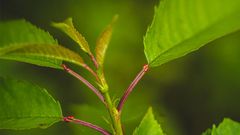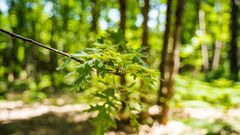

The Common Beech, with the latin name Fagus sylvatica, belongs to the Fagaceae family, which it shares with the Oak and the Chestnut. Beech has long been cultivated for the production of timber, mainly for furniture, and grows in pure Beech stands or, more often, in forests where it is associated with Sessile Oak,, Silver Fir, and Norway Spruce.
Beech trees are often used as diversification species in forests. In some high forest stands, Beech intentionally planted alongside Oak. This forestry technique is used to encourage the Oaks to grow straight and tall, limiting the development of low branches, which is beneficial for the production of high-quality wood.
Beech is a shade or semi-shade species. This species prefers humus-rich, well-drained and slightly acidic to neutral soils. Beech thrives in cool soils but can tolerate some drought once established. However, they do not grow well on soils that are too acidic or excessively wet. Although beech can grow to impressive sizes and live up to 300 years under optimum conditions, it is generally considered to be a relatively short-lived species, rarely exceeding 400 years.
Beech wood is widely used in the manufacture of many objects and utensils. Its fine, short grain makes it easy to work, particularly in small-scale joinery. It can also be easily bent. From chairs to oars or from staircases to parquet flooring, it lends itself to all kinds of manufacture, provided that there are no long spans (it is therefore rarely used in carpentry) and that it is not left outside unless the wood is treated at high temperature, otherwise it rots easily.
For the druids of Ireland, it represented written knowledge. Beech is also often associated with longevity, due to its ability to live for several centuries. In Celtic mythology, the Beech was a symbol of femininity.
Our goal is to enable anyone to do something that benefits nature and helps us to live in a more harmonious world. So why not become a tree owner in a European forest and help combat climate change?






Please note that this is promotional communication. See our notice of information.